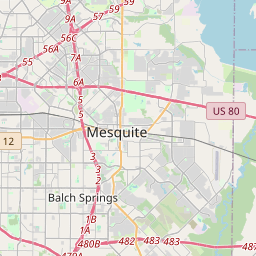Tripp Baptist Church
Historical marker location:






Pioneers arrived in this area as early as 1845, establishing small settlements that developed over time into the Tripp, Long Creek, Hatterville and New Hope communities. By 1882, Tripp residents attended church services in the local schoolhouse. C.J. Washmon, who owned a local grocery store, served as an early pastor for what became Tripp Baptist Church.
In 1906, the congregation began collecting donations to build a new sanctuary, and in 1916 Kaufman County resident Richard Linn donated the property. The building, dedicated in 1918, was also used by the local Assembly of God congregation. In 1954, the Baptists remodeled the original white frame structure, adding a brick façade as well as three classrooms, a pastor's study and a nursery. Later additions included a bell tower.
Early church activities included summer revivals held under brush arbors, often in conjunction with other churches, and baptisms conducted in area creeks, ponds and cotton gin tanks. Over the years, congregation members have also participated in dinners, Christmas nativities and educational programs, and the church has regularly contributed to home, state and foreign missions, and continued in service to its members and its community.
In the 1950s, Tripp consolidated with the neighboring towns of Long Creek, Hatterville and New Hope to form the city of Sunnyvale. For decades, the communities had shared resources, including the Long Creek Cemetery, where many church members are buried. Today, the history of Sunnyvale is comprised of the stories from each community, including the long-standing institution that is Tripp Baptist Church. (2005)
As one of the most visible programs of the Texas Historical Commission (THC), historical markers commemorate diverse topics in Texas history, including: the history and architecture of houses, commercial and public buildings, religious congregations, and military sites; events that changed the course of local and state history; and individuals who have made lasting contributions to the state, community organizations, and businesses.
The state of Texas was once an independent country known as the Republic of Texas. It gained independence from Mexico in 1836 and was a separate nation until it was annexed by the United States in 1845.
Established in 1846, Dallas County played a crucial role in the development of North Texas. The county's namesake, George Mifflin Dallas, was the Vice President of the United States at the time. The city of Dallas, the county seat, quickly emerged as a center for trade and commerce due to its strategic location along major transportation routes.
During the late 19th century, Dallas County experienced rapid economic growth driven by industries such as cotton, railroads, and cattle. The city of Dallas became a major hub for cotton trading, attracting business and establishing itself as a prominent financial center in the Southwest.
In the 20th century, Dallas County continued to evolve and diversify its economy. The discovery of oil in the nearby East Texas Oil Field in the early 1900s led to the development of the oil industry in the region, contributing to the county's prosperity. The county also played a significant role in the aerospace industry, hosting the headquarters of major aerospace companies and contributing to the growth of aviation technology.
Dallas County's cultural landscape reflects its vibrant and diverse population. The county is home to a wide range of cultural institutions, including museums, art galleries, theaters, and music venues. Dallas County also played a notable role in the civil rights movement, with important milestones in the fight for equality and integration.
Today, Dallas County stands as a major economic and cultural center. It boasts a robust economy supported by various industries, including finance, technology, healthcare, and telecommunications. The county is known for its thriving arts scene, professional sports teams, and diverse culinary offerings.
With its rich history, economic vitality, and cultural significance, Dallas County continues to shape North Texas as a dynamic and influential region.
Dallas County Timeline
This timeline provides a concise overview of the key events in the history of Dallas County, Texas.
Pre-19th Century: The area was originally inhabited by various indigenous tribes, including the Caddo, Wichita, and Comanche.
1839: Dallas County was officially established and named after George Mifflin Dallas, the Vice President of the United States under President James K. Polk.
Mid-19th Century: Dallas County experienced significant growth with the establishment of Dallas as a trading post and the arrival of settlers drawn by the opportunities in trade and agriculture.
Late 1800s: The county prospered with the expansion of railroads, particularly the Texas and Pacific Railway and the Houston and Texas Central Railroad, which solidified Dallas as a major transportation hub.
Early 20th Century: Dallas County saw a surge in economic development and urbanization. Industries such as oil, cotton, banking, and manufacturing fueled the city's growth.
1960s: Dallas County gained national attention due to its role in the civil rights movement. The city of Dallas was the site of the assassination of President John F. Kennedy in 1963.
Late 20th Century: Dallas County continued to experience rapid growth and diversification, becoming a major center for business, finance, and telecommunications. The county is known for its vibrant arts and cultural scene, including the Dallas Arts District.
Today, Dallas County is the second-most populous county in Texas and home to the city of Dallas, a thriving metropolitan area.